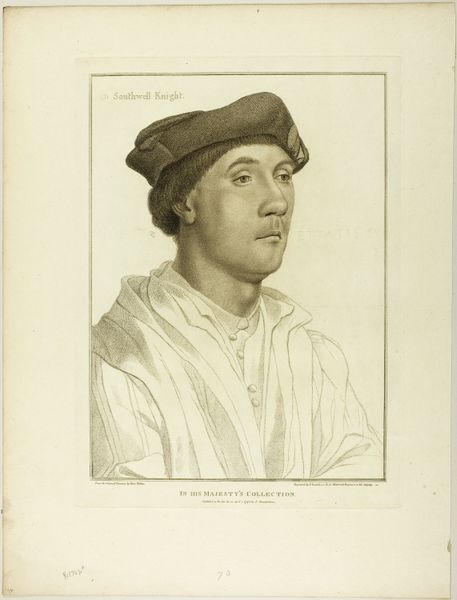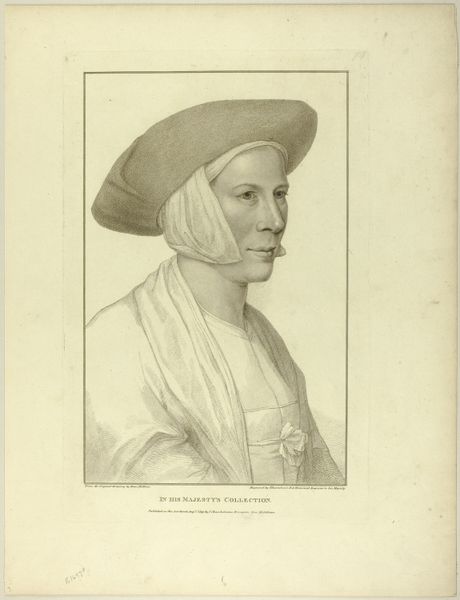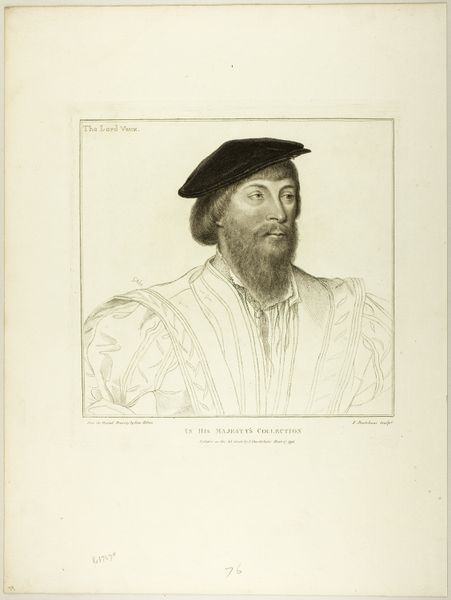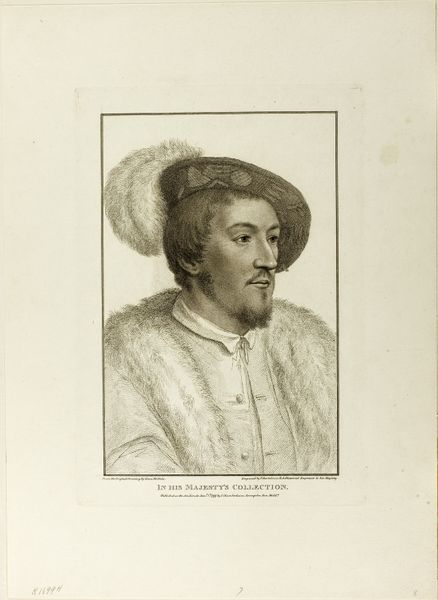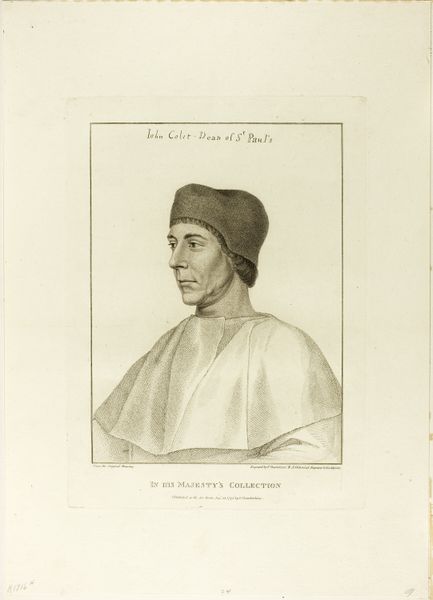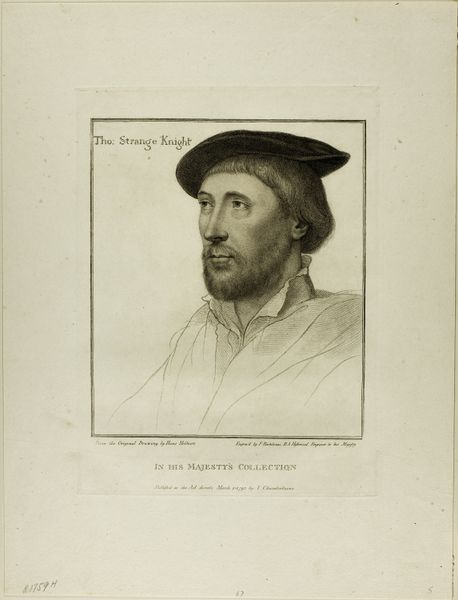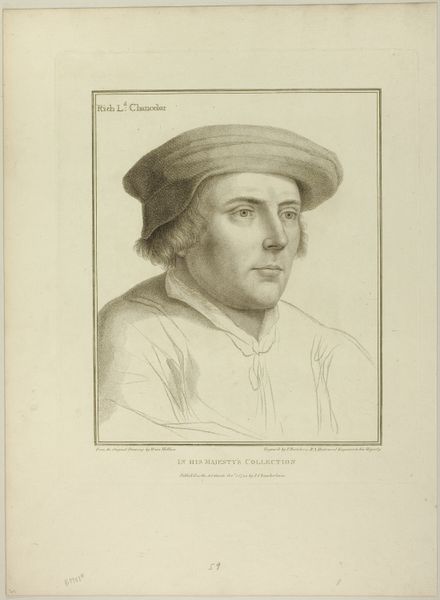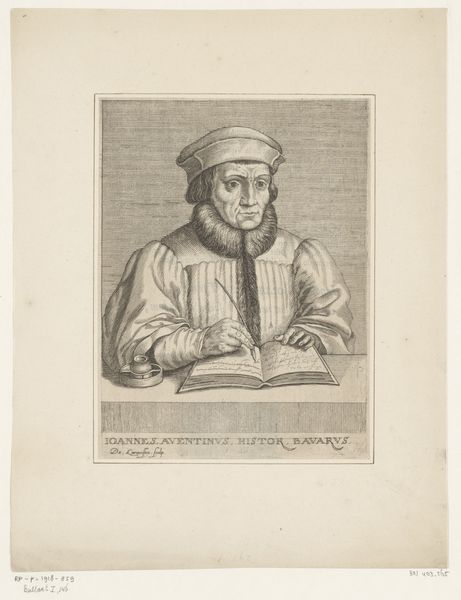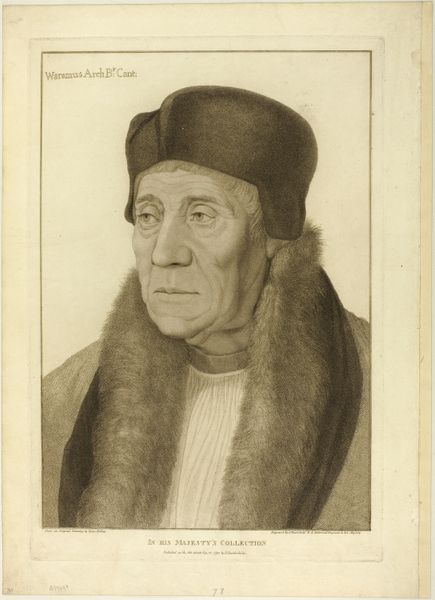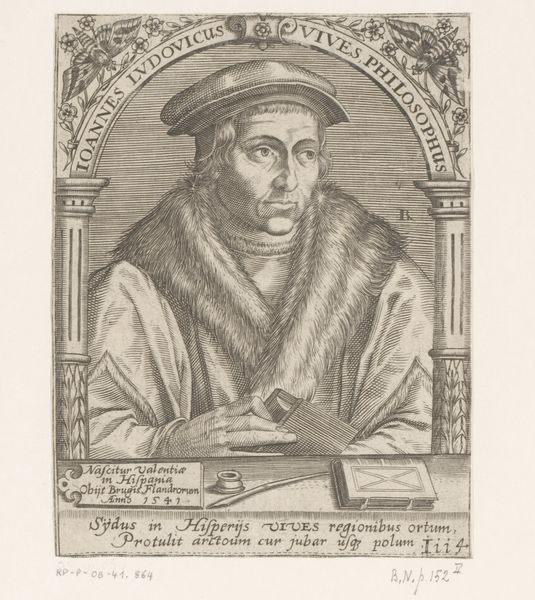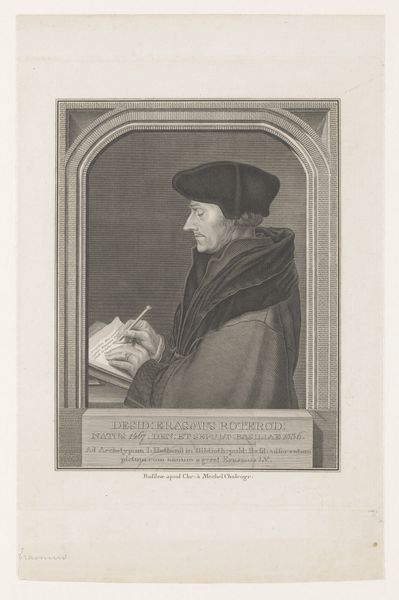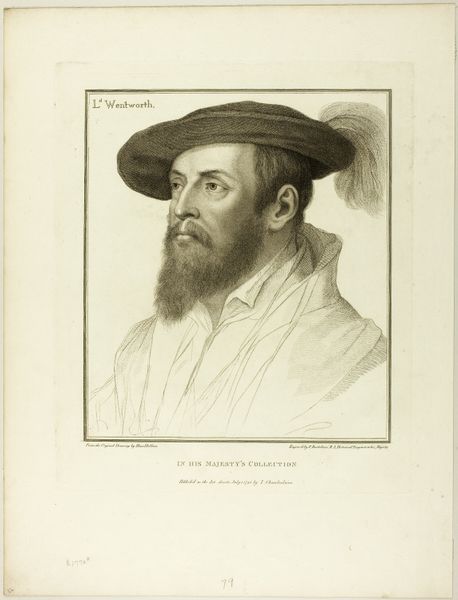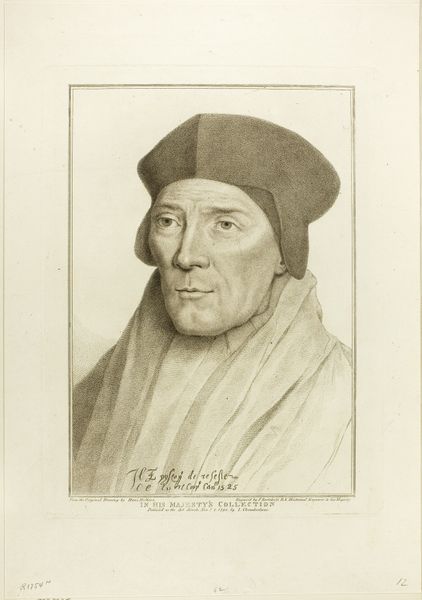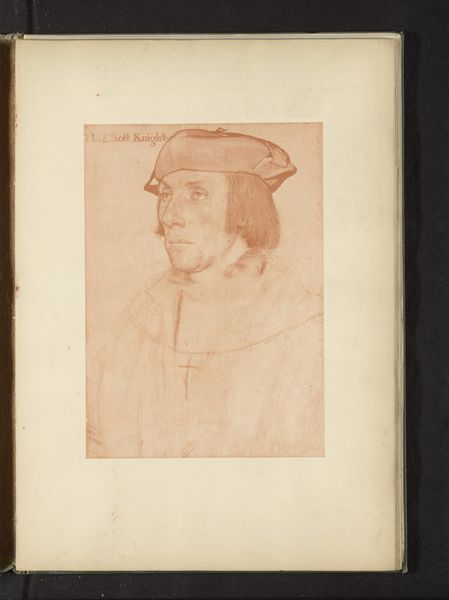
drawing, print, paper, dry-media, pencil, engraving
#
portrait
#
drawing
#
neoclacissism
# print
#
paper
#
dry-media
#
pencil drawing
#
pencil
#
portrait drawing
#
engraving
Dimensions: 349 × 270 mm (image); 408 × 328 mm (plate); 540 × 407 mm (sheet)
Copyright: Public Domain
Curator: So here we have Francesco Bartolozzi's engraving of "Fitz William, Earl of Southampton", dating to 1793. What's your first take? Editor: It strikes me as possessing a certain quietness, a restrained elegance in its simplicity. It's mostly subtle pencil work and engraving, so it's monochromatic and stately, I would even dare say it's… shy, even? Curator: Interesting. It’s a print made on paper using dry media, specifically pencil, typical for preparatory sketches that would be reproduced as engravings, part of the Neoclassical revival where clarity and line were valued. Consider how that might play into our interpretation of Southampton’s representation. Editor: Yes, exactly. It’s more about a transfer of an image—a kind of early mass production if you want—than the bold stroke of an "original" drawing, isn't it? So the intention here isn't to give a truthful rendition but instead show wealth and status through dissemination. Do you see what I mean by shyness? A drawing can possess personality in line and erasure, but with printing it’s made uniform. Curator: Absolutely, and Bartolozzi was an innovator in printmaking techniques. The "how" is essential: he's not just copying an image, but crafting a representation accessible to a broader audience, transforming aristocratic portraiture into a commodity. And here at the Art Institute of Chicago, we consider the way those transformations also changed who and what art was meant to reach. Editor: I see it now. The lack of colour or much texture speaks to control, while the printing reveals production on an even broader, arguably accessible scale. This makes the engraving the subject of art. That feels almost subversive now! Curator: In a way, it absolutely was! To challenge the established hierarchy of art was a new type of thinking at the time. So what's your overall impression, now that we've looked under the surface? Editor: Well, before I saw it only as a nice, quiet drawing. But knowing the layers of artistic innovation and its effects on production brings a fresh context. So thank you.
Comments
No comments
Be the first to comment and join the conversation on the ultimate creative platform.
